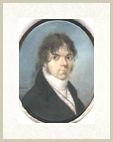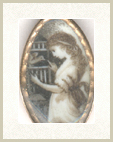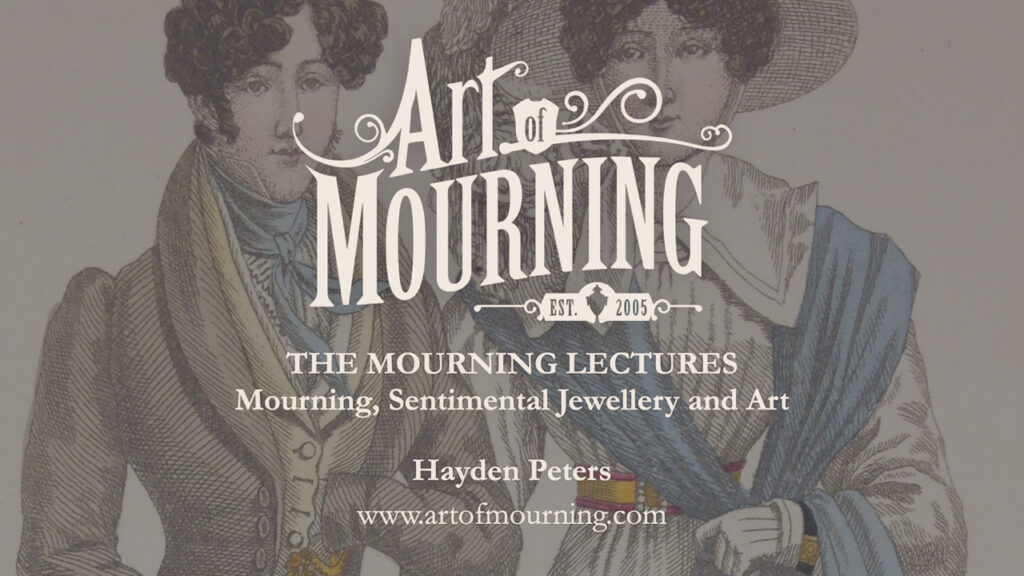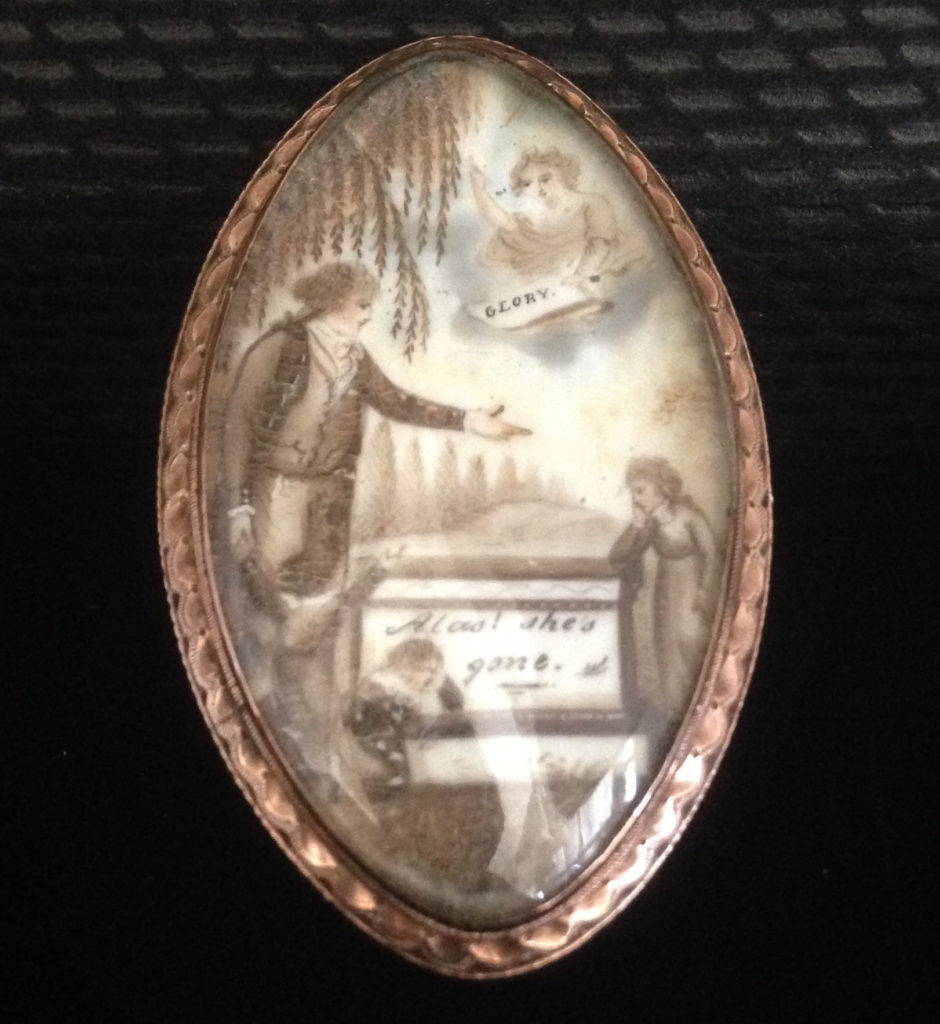Spotlight On: Mourning and Sentimental Miniatures
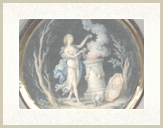
These remarkable miniatures also from the collection of Don Shelton (Artists and Ancestors – Miniature Portrait Art Collection) show an astounding variation in memorial and sentimental symbolism.
The piece by Johann Adamek (1776-1840), who was an Austrian miniaturist, has quite a lovely portrait on the front, but the memorial sentiment on the back is most unique.
Quite Continental in its style (typical of France, Germany and Austria), the memorial scene of the classical woman showing her right breast exposed, weeping in front of a burning pyre on top of a plinth, all set in front of a blue background.
One thing that should be noted is the more abstract nature of the European mourning setting which takes more cues from classical art and embellishes it with greater levels of artistic depth and individuality than its British counterpart.
This is not unique to this piece alone, but quite common of more Continental pieces of the neo-classical period, there was less of a ubiquitous standard and more of an abstract nature given to the portrayals of the mourning scene or sentiment. Please view other pieces within Art of Mourning to identify many different forms.
It should be noted that the bird in relation to a sentimental image is also important; if the bird is a dove, then it can be further detached from the subject and more inclined towards a neo-classical ideal of peace/hope/heaven, if the bird a sparrow then love (dedication, trust), if the bird is a swallow, there’s motherhood or children involved. There are many neo-classical images of the woman holding the bird with a man looking upon her or involved with her (hand upon shoulder or body) which allude to motherhood, futurity and the prospect of a child. Many of these bird subjects often come back to the nature of the child.
In classical art, it has been suggested that the bird in the cage was relevant to an ‘awakening’ of the subject, be it in a sexual manner or a path to adulthood, I believe that what the relation of the bird is upon the subject (depending on how it references the bird) can define it being death or a new life. Be aware, though, that the bird as the subject without the human element or any context for the bird (no cage), the bird becomes its own individual symbol and is often the anthropomorphic establishment of its subject or often an ecclesiastical ideal (though this takes us to the Protestant iconography vs Catholic symbolic differences).




